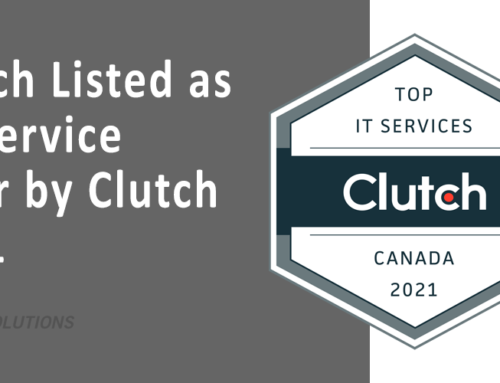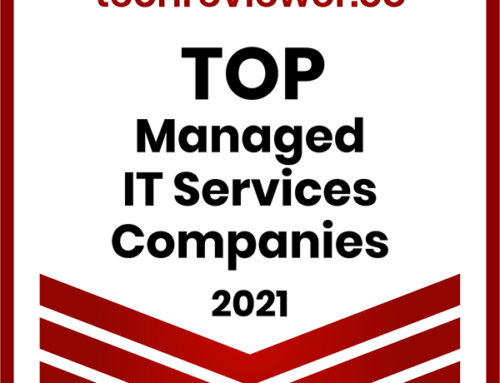The rise of cloud computing has transformed the face of work in the enterprise sector. As of 2020, about half of all corporate data is stored in the cloud. According to Cisco, up to 94% of all workloads are now being processed by cloud data centers.
This growth is not expected to slow down anytime soon. 2020 was a significant year for the cloud. It played a major role in facilitating remote work and collaboration solutions and enabled companies to stay productive despite the lockdowns that resulted from the global pandemic.
Thus, companies are undoubtedly going to continue leveraging cloud technologies to ensure business continuity, more flexibility, and better cost efficiency in 2021. Let’s take a look at some of the cloud computing trends that can help you contextualize and improve your existing cloud strategy.
Hybrid and Multi-Cloud Solutions are on the Rise
Many businesses are realizing that the best way to leverage the cloud isn’t necessarily to stick to one specific solution or platform. Instead, it’s often better to choose whatever solution is best for the problem at hand. As a result, enterprises are increasingly beginning to embrace a multi-cloud or hybrid solution.
According to the IDC 2021 report, by 2022, over 90% of companies worldwide will be relying on combinations of multiple public cloud services, dedicated private clouds, and legacy platforms. These hybrid and multi-cloud approaches give businesses the best of both worlds, allowing them to benefit from the scalability and speed of the public cloud as well as the higher cost-efficiency of the private cloud.
As a result of the rise in these approaches, there’s a growing push for the big public cloud service providers such as Amazon, Microsoft, and Google to break down the barriers between their platforms and move away from their traditional walled garden approach. This will benefit their customers and enable them to better take advantage of the growing multi-cloud trend.
However, such moves run contrary to the business models of the cloud providers, which often rely on upselling additional services and larger cloud capacity to their existing customers. Nevertheless, in 2019, Microsoft and Oracle announced a partnership to link their cloud services, allowing their customers to migrate their existing applications to the cloud. We may also see the rise of innovative startups offering solutions that make it easier to operate different public cloud platforms.
Organizations Focus on Controlling Cloud Costs
The cloud expenditure of a lot of organizations has risen in the last few years. According to the Flexera 2021 State of the Cloud Report, 36 percent of enterprises spend over $12 million annually on cloud services. The report also reveals that organizations waste up to 30 percent of their entire cloud spend. Thus, organizations are increasingly looking to streamline their cloud-related operations to reduce cloud costs.
Controlling cloud costs is a challenge for most organizations due to the variety of pricing and billing models offered in the industry. As a result, it can be difficult to accurately estimate monthly costs and properly budget for cloud requirements. Most enterprises are under-budgeting their cloud expenditure by an average of 23 percent.
To deal with these challenges, companies are focusing on optimizing their use of the cloud and ensuring improved financial reporting on cloud costs. Companies are also turning to innovative third-party solutions to gain useful insights into their systems and effectively manage rising costs.
Edge Computing
Edge computing is a growing trend in the cloud sector that involves setting up data processing and storage centers close to where they’re needed. This model provides benefits such as reduced latency, increased security, and more bandwidth. Edge computing is going to be essential for technologies that require a lot of speed and processing power such as robotics and AI.
While the current centralized cloud model will continue to exist, edge computing will power a wide array of real-time applications. Companies such as Dell, IBM, and Intel are investing in edge computing solutions that can be deployed anywhere. Forrester predicts that edge computing vendors will shave five points from public cloud growth in 2021.
Serverless Solutions
Small and medium enterprises are beginning to leverage serverless solutions instead of traditional large monolithic architectures. Serverless solutions enable startups and smaller companies to grow rapidly without a huge investment of capital. They also enable businesses to scale faster and only pay for costs incurred. As a result, serverless solutions were among the fastest-growing PaaS services of 2020.
According to Mordor Intelligence, demand for serverless solutions is expected to grow by up to 25 percent by 2035. Serverless architecture provides companies with secure sandboxes to implement their code, allowing developers to experiment freely with cloud services. Event-driven serverless solutions only run when triggered by specific events, making them ideal for dealing with emergencies. Experts believe that serverless computing will significantly impact how cloud-based applications are built going forward.
Artificial Intelligence
Cloud computing both benefits from and heavily impacts the field of artificial intelligence. Most cloud services rely on some form of AI for necessary operations such as managing data, optimizing workflows, and analyzing insights. In turn, cloud computing boosts the scope of AI. The market value of AI is expected to reach $89 billion annually by 2025.
Traditionally, leveraging artificial intelligence requires a substantial investment in skilled personnel and capable hardware. Nowadays, cloud services are lowering the barrier to entry and making AI more accessible to a wider variety of organizations. Businesses are now able to benefit from AI technology without a large investment.
Organizations that are already implementing AI technology in their operations will need solid AI engineering strategies to take AI projects to completion. An AI engineering strategy will help to increase the likelihood of success of an organization’s AI projects and ensure that the company receives the full value of its investments.
Cloud Automation
Due to the operational issues that come with a multi-cloud approach, many organizations are turning to cloud automation to simplify the management of their cloud environments. Cloud agnostic services such as Terraform are enabling organizations to create identical infrastructure across the different cloud platforms they work with.
Organizations operating multi-cloud or hybrid-cloud environments are also interested in detailed analytics that enable them to accurately measure and compare the performance of their cloud service providers.
As the complexity of orchestrating and optimizing a myriad of interconnected services and applications grows, cloud platforms will focus on providing automated cloud management. This will be an important factor for many firms to consider when selecting a cloud provider in 2021.
Continued Growth in ‘As a Service’ Solutions
One of the easiest ways to get started with the cloud for many organizations is to leverage the “as a service” model. These solutions offer ease of use and flexibility and enable companies to meet their organizational goals. “As a service” solutions have been growing in popularity in recent years and are expected to continue to expand.
The use of Platform as a Service (PaaS) has been increasing as enterprises move to modernize their legacy applications with cloud-native functions. Gartner predicts that the PaaS market will grow by up to 26.6 percent in 2021, driven by the need for remote workers to access highly performant, scalable infrastructure to carry out their work.
More organizations are also expected to migrate their IT systems to the cloud due to the effects of COVID-19. The adoption of platforms such as Google Drive and Microsoft Azure skyrocketed in 2020 as teams searched for solutions to enable them to better collaborate from remote locations.
Software as a Service (SaaS) includes all the software and services offered by third-party companies via the internet using a subscription model. SaaS contributes about $20 billion to the revenues of the providers every quarter, and that number is expected to increase by 32 percent annually.
The competition between SaaS providers has resulted in an abundance of affordable solutions. As a result, public cloud services will remain dominant for the foreseeable future. Emerging SaaS offerings are increasingly integrating AI and machine learning into their services.
SASE Adoption is Growing
Secure access service edge (SASE) is a new cybersecurity concept that integrates WAN capabilities and network security services such as Zero Trust and cloud security access brokers (CASBs) in one cloud-delivered service model. Gartner predicts that at least 40 percent of companies will have strategies to adopt the SASE model by 2024.
SASE adoption will continue to grow as more companies move past the temporary measures they implemented in 2020 in response to the sharp increase in the need for remote workers. Smart IT departments will start planning for a more integrated approach to device and worker security.
Data Governance and Cloud Migration
The effects of the COVID-19 pandemic and the continued growth of the cloud are leading to an increasing focus on data governance and compliance. Organizations are initiating projects to ensure the secure migration of data to the cloud. This often involves the encryption of all data that their data governance team requires before it is moved from on-premises to the cloud.
Data governance is becoming a more prevalent topic for Chief Information Officers as they work to ensure the availability and responsible use of data in the cloud. Experts predict that security, privacy, and data governance will be integrated early in the process of building new business systems.
Sustainable Cloud
It’s becoming increasingly evident that consumers view organizations and businesses not just as corporations but also as an embodiment of values. Many consumers don’t hesitate to abandon brands that fail to conform to their values. Thus, companies are beginning to assess their approach to social issues including the environment.
This has led to the rise of sustainable cloud initiatives. Research shows that 80 percent of consumers view sustainability as a vital issue to consider when evaluating brands. Organizations are focusing on making their cloud operations more energy efficient. Many companies have been able to reduce their energy consumption and carbon emissions by migrating portions of their infrastructure to the cloud.
Solution-Focused Third-Party Vendors
As more organizations move their operations to the cloud using IaaS, SaaS, and PaaS, there will be a need for solution-focused third-party vendors to help with specific problems. While the major cloud providers will continue to provide infrastructure solutions such as storage and computing power, innovative third parties will provide services for specific needs such as networking, data, IoT, and machine learning technologies.
These external vendors will need to be well-versed in how the cloud works and properly equipped to provide the best solutions for specific use cases and challenges.
Containerization
Containerization is a growing cloud trend that involves packaging applications and their dependencies in a lightweight container that can run reliable across multiple computing environments. This approach enables enterprises to save server and maintenance costs since one server can host multiple applications in different containers.
Containerization also improves scalability, load times, and security. It also makes it easy to transport applications between different platforms and environments. Many cloud providers are offering container applications as part of their services. Gartner predicts that 70 percent of global organizations will be utilizing containerized applications by 2023.
Conclusion
Cloud computing is certainly here to stay and will continue to transform our modern society as we move forward. More organizations are adopting cloud solutions because of the numerous benefits they provide in the areas of scalability, cost savings, and flexibility. These advantages have been highlighted as companies adapted to meet the unique challenges presented by the COVID-19 pandemic in 2020.
Multi-cloud and hybrid cloud strategies are being adopted by more enterprises. The growth of the public cloud has led to a significant increase in cloud expenditure. Optimizing cloud operations to reduce cost remains a top priority of many organizations.
Understanding current cloud computing trends enables enterprises to take advantage of them and better anticipate future trends. As the business world continues to embrace cloud computing, the landscape will continue to evolve and companies will need to stay informed and continually adapt to these changes.
If you are looking for a dependable cloud computing service provider in Vancouver BC, Synditech can assist you and your company with migration to the cloud with customized computing solutions that offer long-term scalability.





